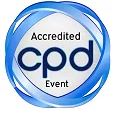
Jean-Guillaume Eon
Universidade Federal do Rio de Janeiro, Brazil
Title: Topological features in crystal structures: A quotient graph-assisted analysis of underlying nets and their embeddings
Biography
Biography: Jean-Guillaume Eon
Abstract
Topological properties of crystal structures may be analyzed at several levels, depending on the representation and the topology that have been assigned to the crystal. We consider here the combinatorial or bond-topology derived from the underlying net, which is independent of its embedding in space. Periodic nets representing one-dimensional complexes, or the associated graphs, characterize the skeleton of chemical bonds within the crystal. By topological features we mean the different possible building units that can be used to describe a crystal structure and the mode of connection between these units, independently of the geometrical details of the structure. Such building units can be finite or infinite, corresponding to one-, two- or even three-periodic subnets. Examples of infinite units include linear chains or sheets of corner- or edge-sharing polyhedra. Periodic nets can be represented by their labelled quotient graphs. This presentation will deal with the trace or projection of building units on labelled quotient graphs. Decomposing periodic nets into their building units relies on graph-theoretical methods classiï¬ed as surgery techniques. The most relevant operations are edge subdivision, vertex identiï¬cation, edge contraction and decoration. Instead, these operations can be performed on labelled quotient graphs, evidencing in almost a mechanical way the nature and connection mode of building units in the derived net. Various examples will be discussed with the visual support provided by the program package TOPOS, ranging from ï¬nite building blocks to three-periodic subnets. Among others, the structures of strontium oxychloride, spinel, lithiophylite and garnet will be addressed.

